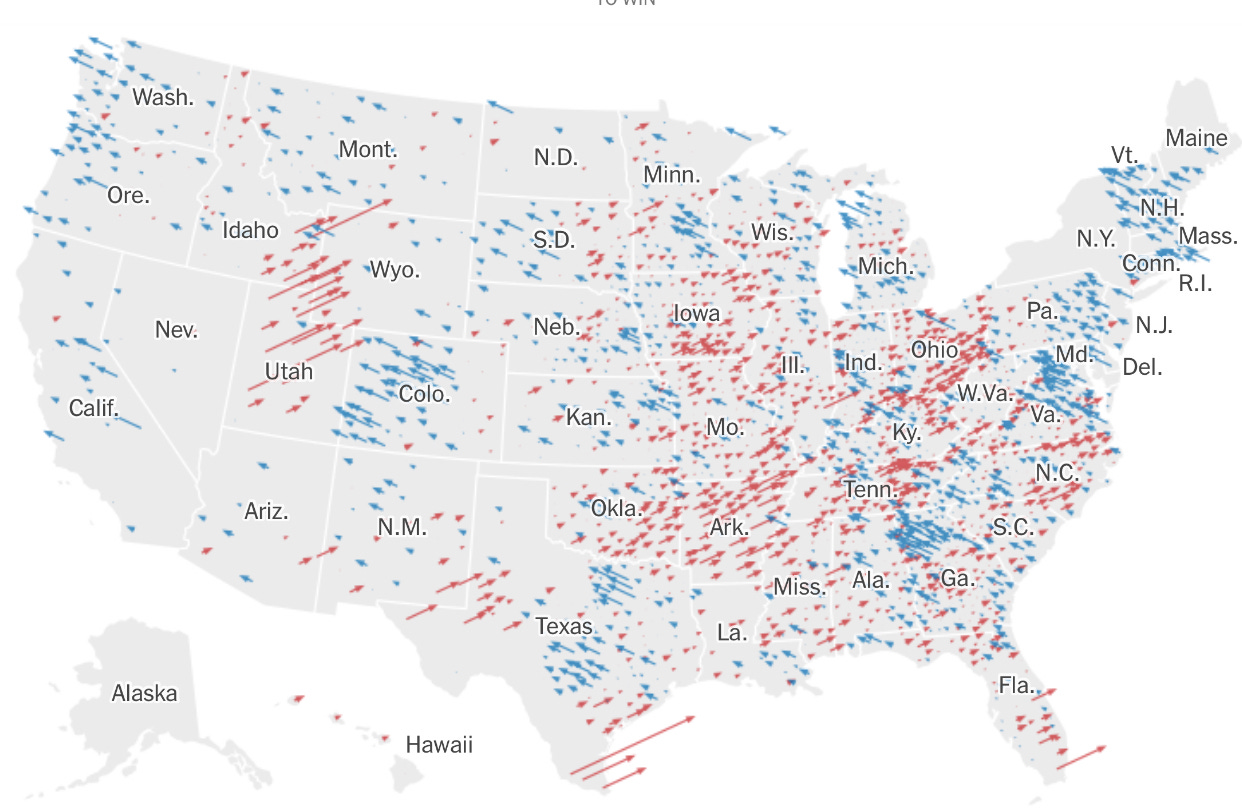“A president for all Americans”
Joe Biden is the president-elect, but a victory could be harder next time
Friends,
It has admittedly been too long since you’ve heard from me. But believe me when I say that it has been a tiresome week! And it is not for lack of trying that I have not yet posted. Since election night, I drafted this text multiple times, but each time had to start over as events in the presidential race made the text outdated.
The wait is over. As I write this, Joe Biden has just delivered his victory speech from Wilmington, Delaware — probably the most exciting thing to happen in the state ever. In his speech, Biden recited psalms and pledged to be a “president for all Americans,” a welcome call for unity after years of divisiveness from the head of our government.
Biden’s speech also means there’s nothing else to make this piece stale! So here we go!
I have been focused mainly on three things since election night. The first is the extent to which the country has become more polarized along geographic lines. Not by red states and blue states, but by population density. Between 2012 and 2016 Democrats gained votes in cities while rural areas have been moving toward Republicans. That much is well-known by now.
But it is somewhat surprising that such a divide has worsened since. Although pre-election polls suggested that Joe Biden had gained ground versus Hillary Clinton’s vote share among voters in both rural and suburban areas, only the latter group really showed up for him. According to county-level results so far, many rural areas even swung toward Donald Trump. See this chart from the New York Times:
The swings in Ohio are especially striking. This increasing geographic polarization is worrying for all types of reasons. We’ll talk about them more in coming weeks. For now, just hold in your head the image of Trump supporters with paintball guns driving into Portland last summer to shoot protestors while demonstrating.
Joe Biden’s underperformance with rural voters raises a second point, about polling error. This election cycle is shaping up to have an above-average error in predicting Joe Biden’s state-level vote margin. Worse, polls almost uniformly overestimated support for Joe Biden. That’s especially true in rural states with higher concentrations of working-class whites: Iowa, Ohio, Wisconsin, Michigan, Pennsylvania.
Another way of saying this is that polling error was worse in states with more Trump supporters. This is a troubling pattern not only because it suggests that pollsters are less likely to get interviews from people who support the president, but also because it’s the same pattern we saw in both 2016 and 2018! And there are a few theories about why that is, but these too I will save for another letter. The point right now is that polls have underestimated Trump in roughly the same states across time. Pollsters will have to deal with that error.
Another product of this urban-rural polarization is the increasing geographic bias of the electoral college. Per my projections of the votes in states that have yet to count them all, it looks like Joe Biden’s vote margin over Donald Trump will land somewhere around 5 percentage points, more or less. And at current count, the electoral college tipping-point state is Wisconsin, which has given Joe Biden a 0.6 percentage point margin. That means there is poised to be a 4-5 percentage point, pro-Republican gap between the national vote and the electoral college majority. In other words, Democrats have to win the popular vote by 4-5 points to win the election. That’s up from 3 points in 2016.
This is concerning, as I have written about before. The pro-Republican distortion of our electoral and governing institutions has all sorts of downstream consequences that we would fundamentally reject under a more representative system. We see that not only in the presidency but the House and Senate as well — in all three, Democratic elected officials occupy fewer seats than their share of the vote implies. All because our system was set up 240 years ago to give more weight to white farmers, and because Republicans have come to dominate against them.
…
Another byproduct of the Republican edge in the electoral college is that this election took four extra days to call than a simple popular vote tally would have. I for one would have enjoyed getting more than four hours of sleep each night this week. I blame the founders for the deficit.
Until next time.




